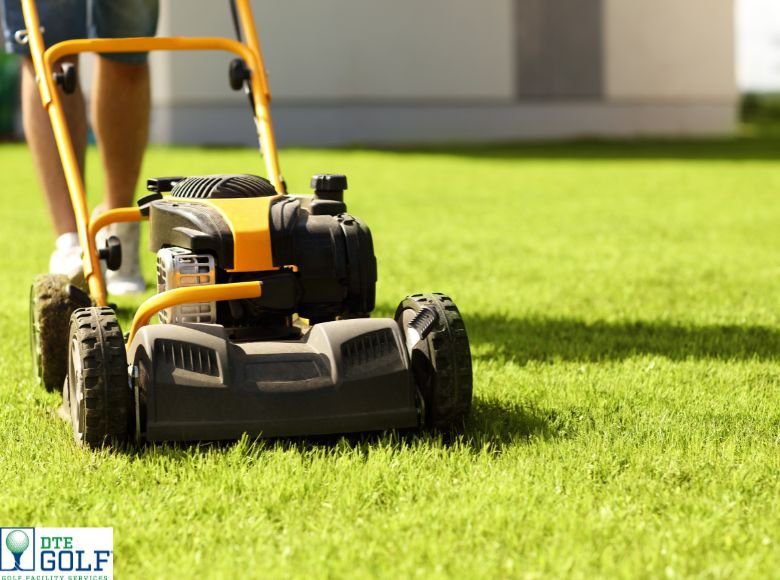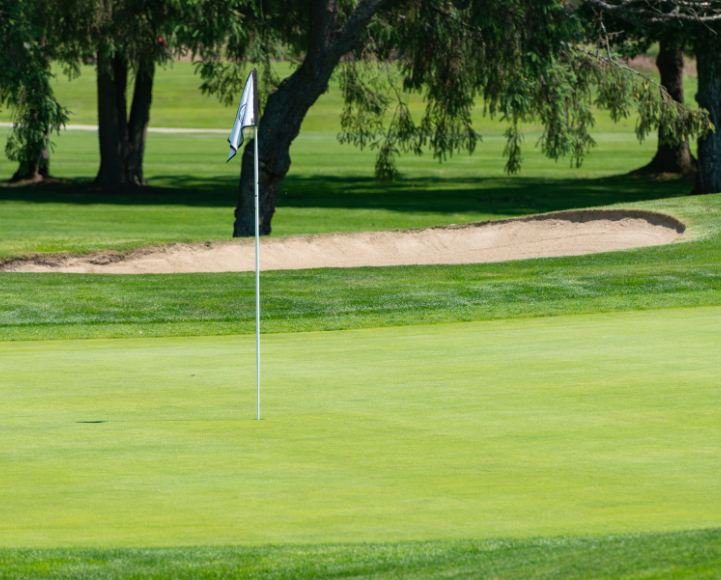Tee and approach mowing is crucial for golfers as it directly affects the playability and aesthetic appeal of the course. Properly maintained tees and approaches ensure smooth, even surfaces for better ball control and accurate shots. Regular mowing prevents issues like uneven cuts, compacted soil, and weed invasion, which can cripple the gameplay and detract from the course’s appearance. Through this blog, we will explore the solutions to common tee and approach mowing challenges to keep the golf course seamless, attractive, and enjoyable for all golfers.
Challenge: Uneven Cuts and Scalping
One of the major complaints that people have is that some parts of the properties are mown unevenly. This can take the form of scalping, where bits of the grass are cut right down to the ground, or poor quality tee box where the grass is not of equal height. Inconsistent heights create less pleasing aesthetics and can also influence the field’s playability.
Solution: Careful implementation of the blades and Proper Mowing Technique
Sharp mower blades are an important factor in achieving a uniform cut. Blunt knives tend to shred the grass rather than cut it smoothly, thus resulting in unevenness. The proper maintenance entails sharpening the blades periodically. Moreover, the proper mowing technique should also be used. Operators need to maintain a constant speed and distance when making passes with the mower. This reduces instances of missing sections and it also avoids scalping. DTE Golf® offers professional equipment maintenance services, ensuring the mowing tools are always in top condition.
Challenge: Poor drainage and compacted soil
From time to time, there is soil compaction on tee boxes due to foot traffic and mower weight. This limits water and air filtration hence limiting the growth of roots and the development of diseases. Compacted soil also affects drainage capacity and, thus, water logging that may cause harm or loss to plants or the entire course.
Solution: Core Aeration and Topdressing
Core aeration performed in regular intervals helps prevent soil compaction. The process of aeration is a procedure that involves punching small plugs of soil, thereby providing paths that will let air, water, and roots pass through. At DTE Golf® we recommend that aeration should be done at least once a year while areas that bear intense traffic require more applications. Lastly, Top dressing involves the addition of a thin layer of sand or soil mixture which enhances drainage and brings new growing media for the turf.
Challenge: Thatch Build up and Disease
Thatch is the brown and dead layer of grass stems and roots lying on the surface of the soil or layer of organic matter between the topsoil and the subsoil. An accumulation of thatch inhibits water and nutrient penetration to the root systems, thus promoting disease infestation. Tee boxes are even more vulnerable to thatch, mainly because of high traffic and constant mowing.
Solution: Vertical Mowing and Fungicide Application
Vertical mowing commonly referred to as dethatching involves the use of specialized equipment to pull out thatch from the top. This enables penetration of water and nutrients easily thus encouraging a healthy growth of the grass. Also, it can be noted that you should consider applying fungicides to manage or even prevent fungal diseases that are ideal for growth in thatched environment.
Challenge: Weed Invasion and Pest Control
Tee box weeds reduce aesthetic value and can overshadow turfgrass by competing for water and nutrients. Further, some insects like the grubs are also known to attack the root system thus, leading to ugly patches of grass.
Solution: Weed Management and Other Pest Control Measures
Proper weed control is possible at any stage of crop development through a licensed specialist and an effective program. This may include applying pre-emergent herbicides which prevent or inhibit germination of the weed seeds as well as post-emergent herbicides to control the already existing weeds. Pest control measures such as Integrated pest management, with the use of cultural control, biological control, and insecticide use only when necessary, are appropriate for pest control without causing harm to the environment.
Looking After a Healthy Playing Field
Tee and approach management is a factor that should not be undermined because their management impacts the general state of the golf course. Some of the common issues like uneven mowing lines, scalping, mower patterns, and impacts of various factors and elements work against the intended appearance and performance of these vital zones.
However, such problems can be controlled and their probable effects eradicated by seeking appropriate solutions from the managers of golf courses. Some of the ways through which these problems can be avoided include constantly servicing the equipment, proper mower calibration, correct mowing methods, and adjusting to the prevailing climate among others.
Other factors that help in maintaining the health and physical appearance of the turf include constant training of groundskeepers and ensuring that they are up to date with the most recent developments in the mowing equipment in the market. Thus, with the help of these strategies, golf courses could be ensured to keep beautiful and nicely trimmed tees and approaches and improve the golfing experience for the players while preserving the image of the course.
If you are looking for a reliable and experienced partner for tee mowing needs, contact DTE Golf® today. Let us help you create a tee box that is both beautiful and a joy to play on.




